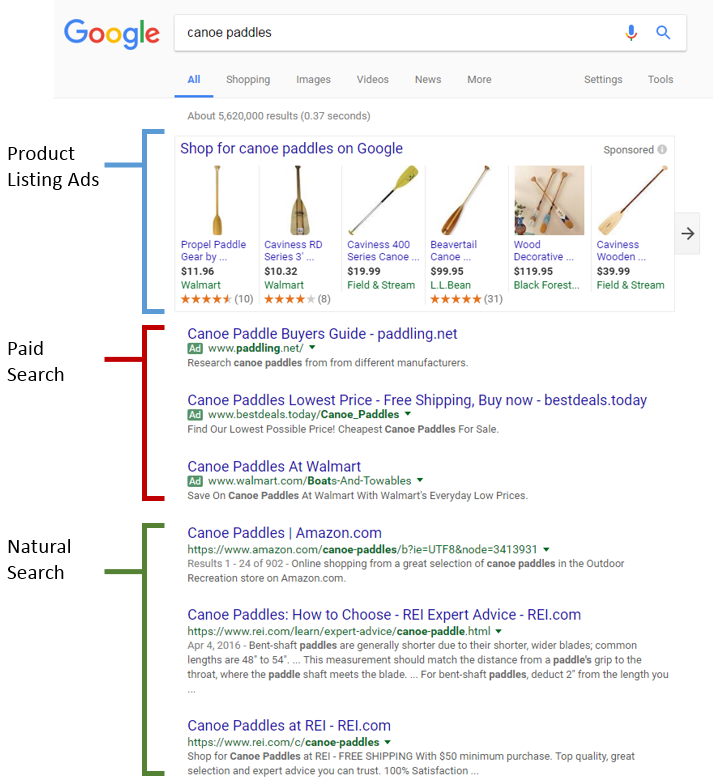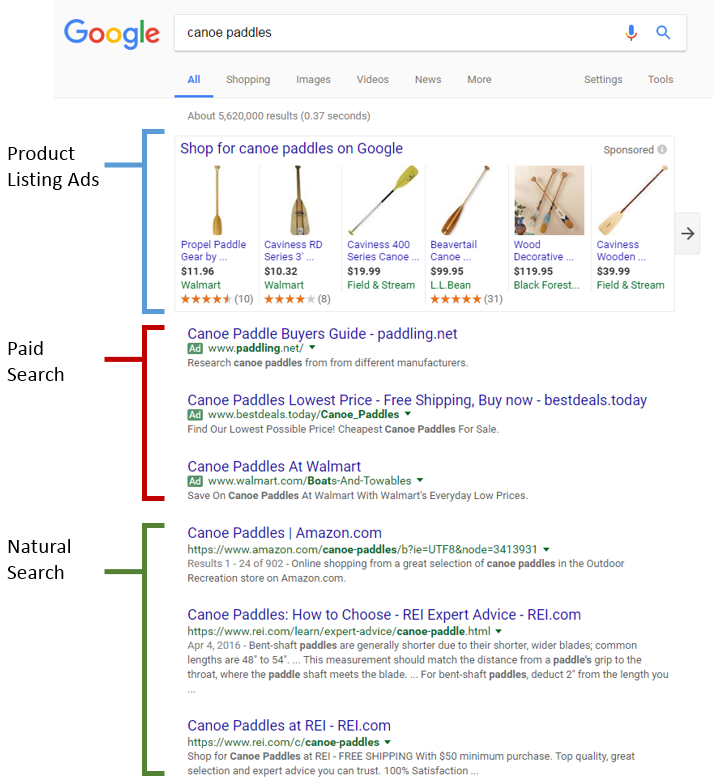Search engine optimization is part science and part art. SEO is simply the practice of optimizing your search-engine presence to produce traffic and to your site. Search engines do not charge advertising fees for natural search results. Visually, natural search results are always toward the top of the page at the left side. Depending on the search engine and the query, there will probably be ads above the natural listings, as shown below. Google frequently places a Product Listing Ads box and up to four other ads above the first natural search listing, resulting in only one or two visible natural search listings when the page loads. Regardless, natural search remains one of the top-performing digital marketing channels for most ecommerce businesses. However, even a business with a mature marketing mix and a site truly search-engine optimized should drive 15 to 25 percent of its traffic and revenue via natural search. However, ethical SEO isn’t about tricks, short-term gains, and taking risks. When combined with the technical and architectural components of designing and developing a site that is optimal for natural search, ethical SEO is an ever-changing discipline that will only die when consumers stop searching.
Editor’s note: This post begins a weekly primer in SEO, with the goal of touching on all of the foundational aspects. At the end, you’ll be able to practice SEO more confidently and converse with others regarding important SEO challenges and opportunities.
Search engine optimization is part science and part art. But the foundational principles of SEO are straightforward. Still, before I can address how to practice SEO, I should explain what it is and why it’s important.
Google alone controls access to trillions of annual requests for information. Google, Yahoo, and Bing remain three of the U.S.’s top four trafficked websites, according to comScore, the research firm. Presence in search results is critical to generating brand awareness and preference. With an estimated $80 billion spent online in the 2016 holiday season alone, and the increasingly “micro-moment,” quick-search mentality of mobile consumers, SEO is more important than ever to driving shoppers to your site and away from the competition.
SEO is simply the practice of optimizing your search-engine presence to produce traffic and to your site. It is also called organic search or natural search. SEO should thread through every aspect of an organization — from product planning, traditional marketing, and customer support to the more obvious areas of digital planning, strategy, content, user experience, design, development, and deployment.
Search engines do not charge advertising fees for natural search results.
Visually, natural search results are always toward the top of the page at the left side. Depending on the search engine and the query, there will probably be ads above the natural listings, as shown below.

With all of the other boxes and components on the search results page, it is…

COMMENTS